 "MasterMario - Keeper of the V8s" (mastermario)
"MasterMario - Keeper of the V8s" (mastermario)
07/11/2018 at 07:56 • Filed to: None
 0
0
 37
37
 "MasterMario - Keeper of the V8s" (mastermario)
"MasterMario - Keeper of the V8s" (mastermario)
07/11/2018 at 07:56 • Filed to: None |  0 0
|  37 37 |
More and more stations around here seem to be switching over to E15 for the mid-grade fuel and at a cheaper price than regular. I put a tank in my big gas- aholic 2000 K3500 just to see if it would affect mileage. Unfortunately I didn’t notice this warning when I did that (noticed it the next time I was filling up).
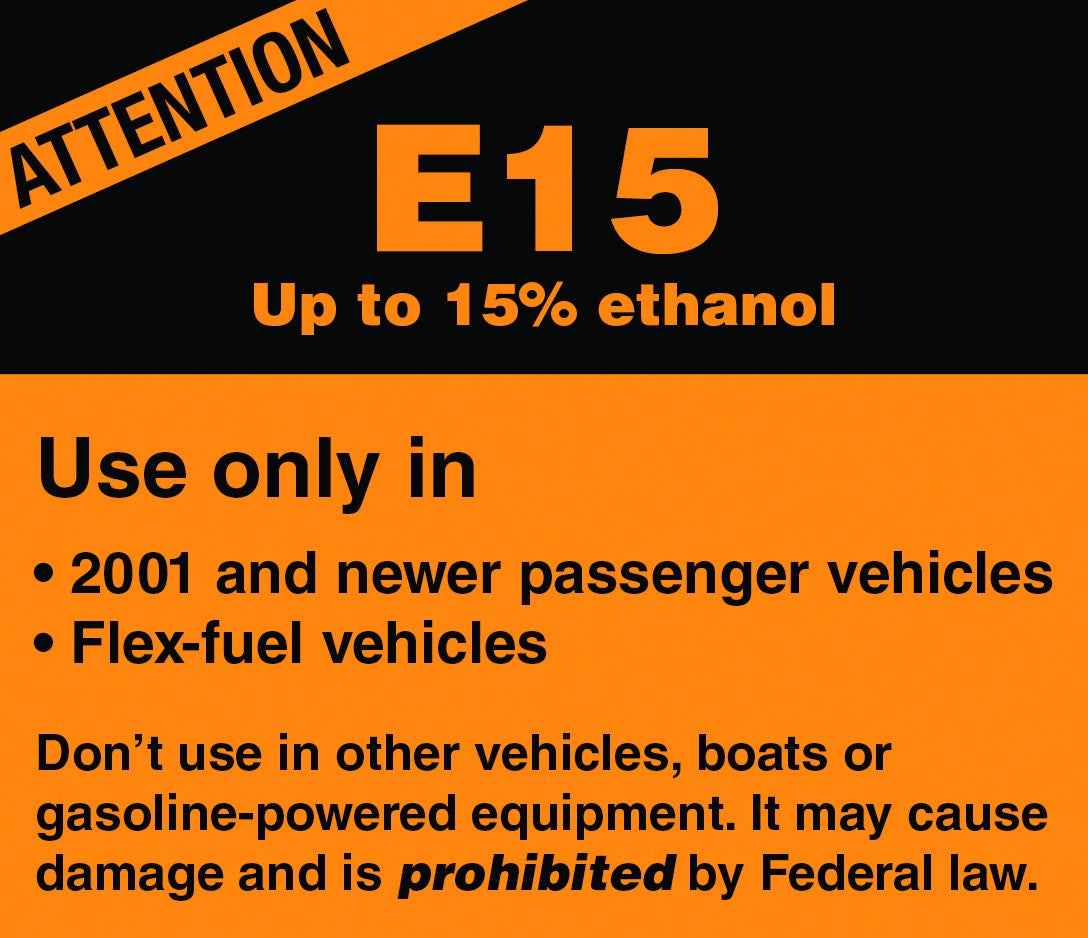
Is there any reason that E15 would actually cause any damage to an EFI engine? And I assume the “prohibited by Federal law” is due to emissions and the costs of verifying “old” cars running on E15.
Weirdly, my truck seemed to like E15. It seemed to pull better and the mpg difference was within the realm of a rounding error.
 Tekamul
> MasterMario - Keeper of the V8s
Tekamul
> MasterMario - Keeper of the V8s
07/11/2018 at 08:27 |
|
E15 I going to deteriorate older fuel systems if any of the flexible pieces or gaskets aren't formulated for ethanol.
It should reduce mpgs, as ethanol has lower energy density than gas. But it's cheaper, because farm subsidies.
 That Bastard Kurtis - An Attempt to Standardize My Username Across Platforms
> MasterMario - Keeper of the V8s
That Bastard Kurtis - An Attempt to Standardize My Username Across Platforms
> MasterMario - Keeper of the V8s
07/11/2018 at 08:28 |
|
Yeah, it’ll dry out your rubber seals. Newer vehicles are made for it, the seals are made of different rubber. One tank won’t hurt, but I’d do some research before you make a habit of it on. an older vehicle.
 MasterMario - Keeper of the V8s
> Tekamul
MasterMario - Keeper of the V8s
> Tekamul
07/11/2018 at 08:35 |
|
So my understanding that it shouldn’t damage the engine, just the fuel system is right?
 MasterMario - Keeper of the V8s
> That Bastard Kurtis - An Attempt to Standardize My Username Across Platforms
MasterMario - Keeper of the V8s
> That Bastard Kurtis - An Attempt to Standardize My Username Across Platforms
07/11/2018 at 08:36 |
|
Was that different rubber mandated in 2001 or something? Why is that year the cutoff?
 SilentButNotReallyDeadly...killed by G/O Media
> MasterMario - Keeper of the V8s
SilentButNotReallyDeadly...killed by G/O Media
> MasterMario - Keeper of the V8s
07/11/2018 at 08:40 |
|
Correct. But an engine is nothing without fuel!
 SilentButNotReallyDeadly...killed by G/O Media
> MasterMario - Keeper of the V8s
SilentButNotReallyDeadly...killed by G/O Media
> MasterMario - Keeper of the V8s
07/11/2018 at 08:44 |
|
Economy will take a hit. Though you may not notice. However, regardless, the cost savings from cheaper fuel may not be there as a result .
Some rubber not formulated to deal with ethanol may degrade quickly but there’s no telling which ones until it happens. We run a 2000 Forester on E10...it's OK.
 MasterMario - Keeper of the V8s
> SilentButNotReallyDeadly...killed by G/O Media
MasterMario - Keeper of the V8s
> SilentButNotReallyDeadly...killed by G/O Media
07/11/2018 at 08:53 |
|
Yes, but the fuel delivery stuff is much cheaper to fix at least
 MasterMario - Keeper of the V8s
> SilentButNotReallyDeadly...killed by G/O Media
MasterMario - Keeper of the V8s
> SilentButNotReallyDeadly...killed by G/O Media
07/11/2018 at 08:57 |
|
I run everything I own on E10, t he closest gas station with ethanol free gas is 15 miles away from me. I try to go out of my way to get ethanol free gas when I can for my Corvette, lawn mowers, and boat, but it’s a pain. I really wish they’d at least allow stations to offer ethanol free even if they tax it more
 SilentButNotReallyDeadly...killed by G/O Media
> MasterMario - Keeper of the V8s
SilentButNotReallyDeadly...killed by G/O Media
> MasterMario - Keeper of the V8s
07/11/2018 at 08:57 |
|
Maybe. But if the replacement parts are not fit for purpose then do you really want to do it again and again and again and again and...it happens.
 MasterMario - Keeper of the V8s
> SilentButNotReallyDeadly...killed by G/O Media
MasterMario - Keeper of the V8s
> SilentButNotReallyDeadly...killed by G/O Media
07/11/2018 at 08:59 |
|
No, of course not. But you could probably find replacement parts that are fit to deal with E15.
 syaieya
> MasterMario - Keeper of the V8s
syaieya
> MasterMario - Keeper of the V8s
07/11/2018 at 08:59 |
|
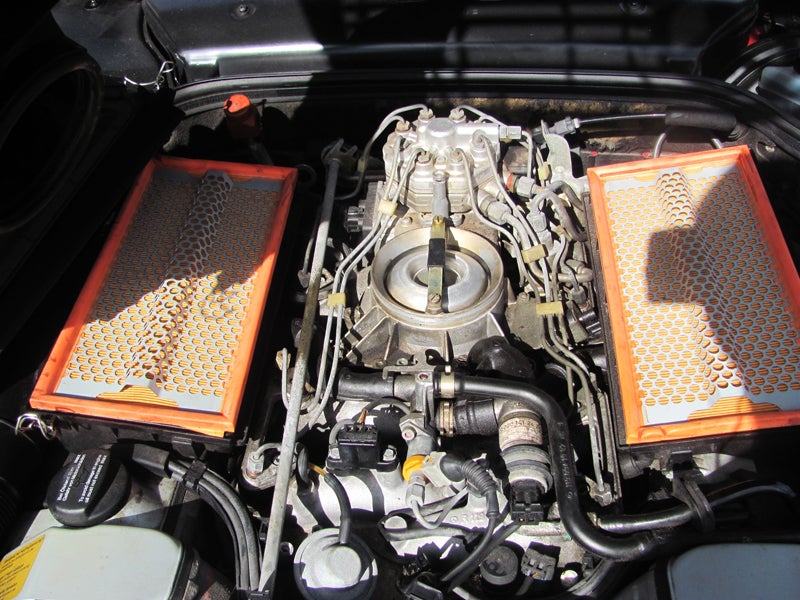
The mercedes fuel spider would like to have a word with you
 bhtooefr
> MasterMario - Keeper of the V8s
bhtooefr
> MasterMario - Keeper of the V8s
07/11/2018 at 08:59 |
|
I think that year’s the cutoff because it was 10 years before when the EPA approved E15.
That said, there’s been some studies going back to the 1990s that say it’s OK, and then some manufacturers saying not to use E15 if the car is older than 2012 (or flex fuel of course).
 MasterMario - Keeper of the V8s
> syaieya
MasterMario - Keeper of the V8s
> syaieya
07/11/2018 at 09:02 |
|

 sn4cktimes
> MasterMario - Keeper of the V8s
sn4cktimes
> MasterMario - Keeper of the V8s
07/11/2018 at 09:04 |
|
My 2015 Husqvarna bike manual still states to avoid ethanol blends is at all possible. So I fill up at Shell as they don’t blend their gas unless required (like winter blend etc). Or at least that’s what I’ve been told before.
 MasterMario - Keeper of the V8s
> bhtooefr
MasterMario - Keeper of the V8s
> bhtooefr
07/11/2018 at 09:06 |
|
I’d expect the manufacturers to say anything not designed explicitl y with E15 in mind is not okay, but whether it actually would be okay or not is another issue.
I may end up digging into this more to see what materials are okay with ethanol and when manufacturers started using them.
 SilentButNotReallyDeadly...killed by G/O Media
> MasterMario - Keeper of the V8s
SilentButNotReallyDeadly...killed by G/O Media
> MasterMario - Keeper of the V8s
07/11/2018 at 09:09 |
|

 So Shiney. So Chrome! So Frunky
> MasterMario - Keeper of the V8s
So Shiney. So Chrome! So Frunky
> MasterMario - Keeper of the V8s
07/11/2018 at 09:13 |
|
Effectively yes. But ethanol lacks the lubrication properties that regular gasoline provides the cylinders. The effect of 5% more over r egular gas should be no issue but if you were to run say E90 or E100, like you might in Brazil, it would create more wear over the lifetime of the engine.
Source: I use to work in FCA’s engine department. Any engine for the Brazil market had a few tweeks to deal with the ethanol such as a coating on the piston skirts.
This isn’t really a warning just something I think is interesting.
 getFuckedHerb
> MasterMario - Keeper of the V8s
getFuckedHerb
> MasterMario - Keeper of the V8s
07/11/2018 at 09:15 |
|
Here in the heart of Cornland USA you can pretty easily get non-ethanol (87/89/91/93 and even 110 in the summer) but 10% is the norm and 15 is catching up. We have blender pumps and a lot of e85 pumps. I run e85 in my Corvette (it’s full flexfuel) and b10-b100 depending on where my wife stops in the Jeep. The Rav gets 10% 89 octane 99% of the time.
As others have stated, you’ll use more to go the same distance but fund my projects. (my wifu is a chemist at one of the largest ethanol producers in the country).
 GLiddy
> MasterMario - Keeper of the V8s
GLiddy
> MasterMario - Keeper of the V8s
07/11/2018 at 09:30 |
|
The last season of Mythbusters ran a new non-flex fuel car (6 cylinder Camaro IIRC) on 100% ethanol. The injection system handled it fairly well. This doesn’t tell you anything about the longevity of the vehicle if you use more ethanol than the car was designed for on a continuing basis. In a pinch, if nothing else is available, its probably not a problem.
 MasterMario - Keeper of the V8s
> getFuckedHerb
MasterMario - Keeper of the V8s
> getFuckedHerb
07/11/2018 at 09:33 |
|
Ethanol free is not sold in the “urban” county I live in, nor two of the neighboring counties.
 MasterMario - Keeper of the V8s
> GLiddy
MasterMario - Keeper of the V8s
> GLiddy
07/11/2018 at 09:55 |
|
I was surprised that my truck seemed to pull better on E15 , but I guess the higher octane might allow it to advance spark farther. Maybe I’ll try E10 mid-grade next and see how it goes
 Shift24
> MasterMario - Keeper of the V8s
Shift24
> MasterMario - Keeper of the V8s
07/11/2018 at 10:10 |
|
Yeah I would not use it again, one tank might not hurt but you have to remember your spider fuel injection was made back in the early 90s and was barely updated. The have already been know to get brittle and go bad with out ethanol. Adding it will make it worse
Now thinking about it you probably have the 454 which has a more common rail system with individual injectors. It might be better but again like others have said the gasket/O-ring material is not rated for. I forget the actual compound that is need but this link talks about the compatibility of FlouroCarbon
Also while it says 2001 and newer AAA warns that only pertains to Porsche. And vehicle manufacturers will not cover any engine issues related to E15. This is on even new cars and the manufacturers are BMW, Chrysler, Nissan, Toyota, VW, Ford, Honda, Kia, Mercedes-Benz, and Volvo.
S ource https://www.usatoday.com/story/news/nation/2012/11/30/aaa-e15-gas-harm-cars/1735793/
 MasterMario - Keeper of the V8s
> Shift24
MasterMario - Keeper of the V8s
> Shift24
07/11/2018 at 10:15 |
|
Yea, it’s a 454. I really wish we’d get rid of ethanol blends altogether, but I really doubt that’s going to happen now with it being so prevalent. At the very least I’d like to be able to purchase ethanol free gas even if it’s taxed more.
 HammerheadFistpunch
> MasterMario - Keeper of the V8s
HammerheadFistpunch
> MasterMario - Keeper of the V8s
07/11/2018 at 11:16 |
|
I dont know what they are on about federal law bit. It does make you think when they tell you E10 is perfectly safe in older vehicles but e15 will cause damage. hmmm.
 MasterMario - Keeper of the V8s
> HammerheadFistpunch
MasterMario - Keeper of the V8s
> HammerheadFistpunch
07/11/2018 at 11:19 |
|
EFI cars I’m not so worried about (though I don’t doubt that it’s affecting the life span of much of the fuel system) , but I cringe every time I have to fill the ‘vette with E10
 HammerheadFistpunch
> MasterMario - Keeper of the V8s
HammerheadFistpunch
> MasterMario - Keeper of the V8s
07/11/2018 at 11:24 |
|
Well I ruined a weedwacker, and had to have the carbs rebuilt on my generator and my 2 stroke motor because of the stuff. Fortunately there is a maverick down the street that sells “clear gas” (ethanol free) so I fill up my 3 gallon rotopax for lawn and genny stuff and my 5 gallon rotopax for the boat. The tank on the boat is only 9 gallons so it works out. Thankfully there are gas stations at the lake that have ethanol free so getting that in the big boat is easy, though filling a 75 gallon tank with ethanol free at lake town prices is pretty sweet...
Back on point...why would a late 90's vehicle be in danger with E15...but not with E10? They say “safe for all vehicles”, oh but an extra 5 parts per hundred crosses a line eh? Sounds reasonable.
 BigBlock440
> MasterMario - Keeper of the V8s
BigBlock440
> MasterMario - Keeper of the V8s
07/11/2018 at 11:44 |
|
 MasterMario - Keeper of the V8s
> HammerheadFistpunch
MasterMario - Keeper of the V8s
> HammerheadFistpunch
07/11/2018 at 11:46 |
|
I don’t think a late 90's vehicle i s in any more danger, I think they just needed a cutoff and arbitrarily picked one. I don’t think ethanol is good for most vehicles, but carbs especially hate the stuff. You’re lucky you have a gas station close that sells ethanol free gas. I need to drive at minimum 15 miles to the nearest one.
I hate filling our boat on the lakes, it’s so much easier to do it before hand and just be ready to go once you launch (we usually trailer it), it’s at least an EFI engine, though I try to stick with ethanol free as much as possible. Also, that ski boat has a 75 gallon tank?! I thought our 60 gallon tank was big.
 HammerheadFistpunch
> MasterMario - Keeper of the V8s
HammerheadFistpunch
> MasterMario - Keeper of the V8s
07/11/2018 at 11:49 |
|
well “ski” boat is not really accurate. Its more a “surf” boat. Its a fatass.
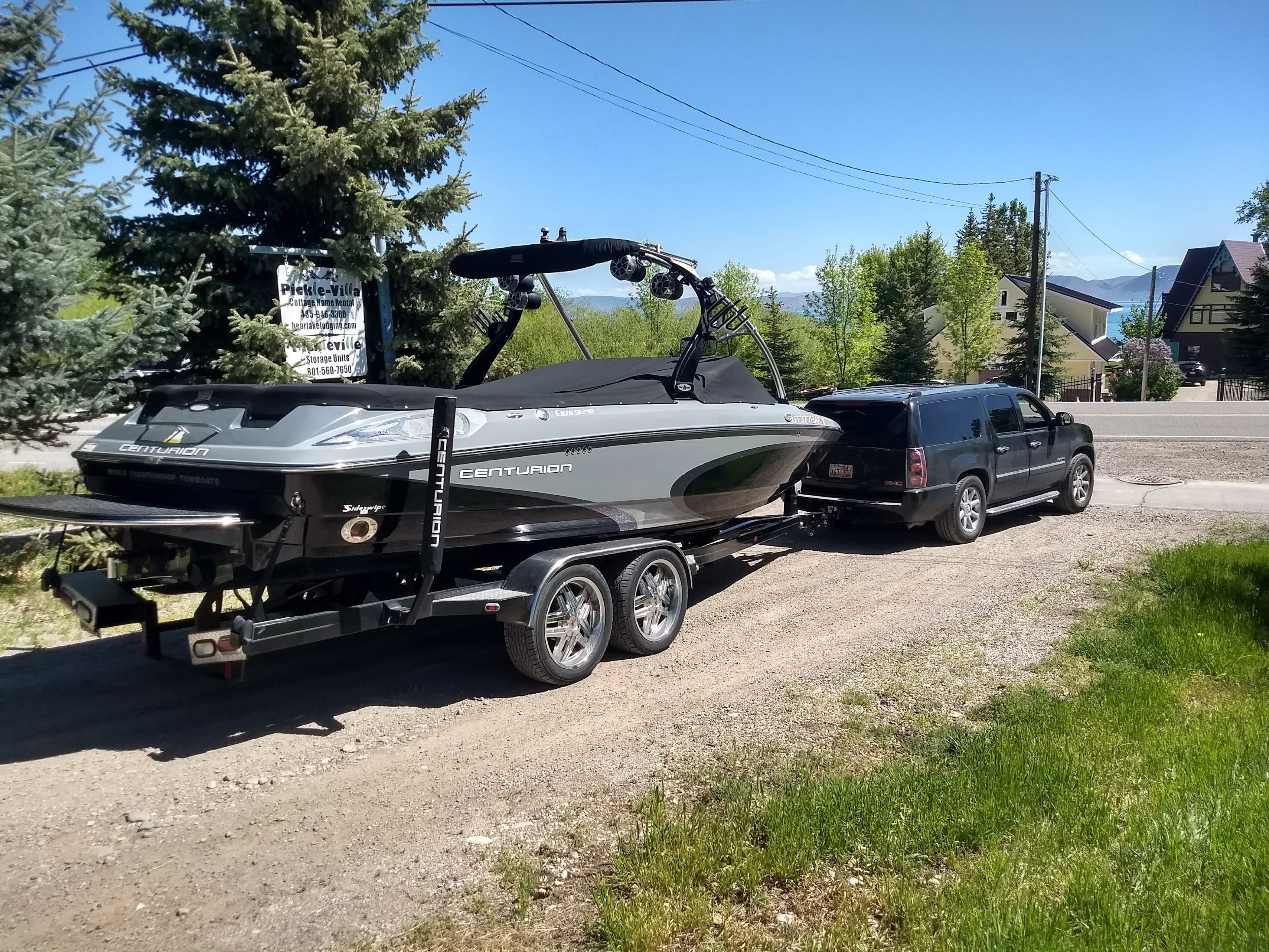
 MasterMario - Keeper of the V8s
> BigBlock440
MasterMario - Keeper of the V8s
> BigBlock440
07/11/2018 at 11:49 |
|
I know, I live inside this big hole here
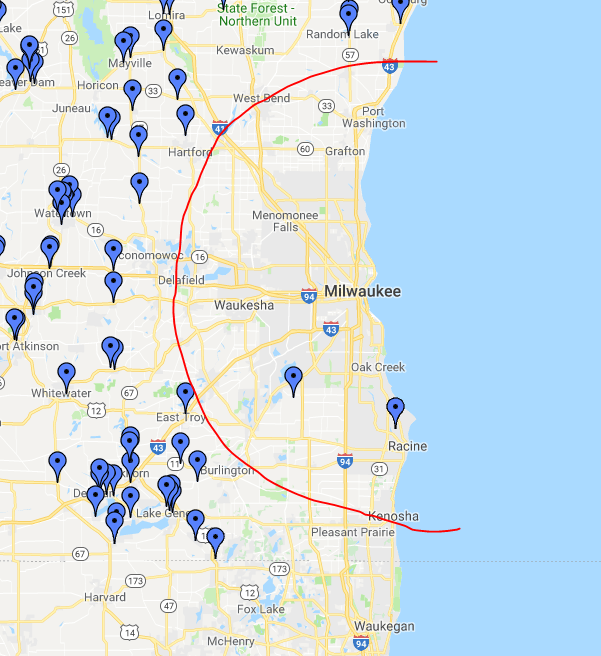
And those 2 inside the hole? Airports
 MasterMario - Keeper of the V8s
> HammerheadFistpunch
MasterMario - Keeper of the V8s
> HammerheadFistpunch
07/11/2018 at 11:54 |
|
Wow...yea. I didn’t think it was that big, it’s basically the same size as our boat. I think these specs are almost identical between our boat and this one.
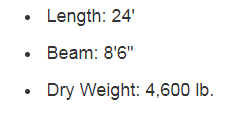
 HammerheadFistpunch
> MasterMario - Keeper of the V8s
HammerheadFistpunch
> MasterMario - Keeper of the V8s
07/11/2018 at 11:59 |
|
pretty much, though I think its much heavier than they say . The smaller 230 weighs about 6400 lbs on trailer, I would guess this is well over 7000 lbs as it sits.
 BigBlock440
> MasterMario - Keeper of the V8s
BigBlock440
> MasterMario - Keeper of the V8s
07/11/2018 at 12:04 |
|
[shrug]
 MasterMario - Keeper of the V8s
> BigBlock440
MasterMario - Keeper of the V8s
> BigBlock440
07/11/2018 at 12:27 |
|
It sucks man. I at least live somewhat close to the edge of that arc, if you live in or near downtown Milwaukee it’s like 30-40 miles to an ethanol free gas station.
 Spoon II
> MasterMario - Keeper of the V8s
Spoon II
> MasterMario - Keeper of the V8s
07/11/2018 at 12:48 |
|
It’s my understanding that ethanol can eat away at the lines and whatnot in older vehicles/things not intended for ethanol . Newer cars have materials that are built to withstand the ethanol.
 Die-Trying
> MasterMario - Keeper of the V8s
Die-Trying
> MasterMario - Keeper of the V8s
07/11/2018 at 16:05 |
|
best i recall it, e85 needed around a third more fuel to go the same distance, and that you needed to run that third more, to get the air to fuel ratio back into its safe operating range. otherwise it goes lean, and cars that cant add enough fuel back into the mixture basically turn the combustion chamber into a giant blowtorch, and melt holes in the tops of your pistons, and burn the top ringland out, or cause the top ring to run out of sufficient gap, and allow the ends to butt, and break the ring, and piston, or gall the cylinder wall........ thats all doom and gloom worst case sounding stuff, but it happens pretty quick, when an engine is under a decent load and timing starts to move around........ surprisingly it doesnt take long to burn up some pistons......
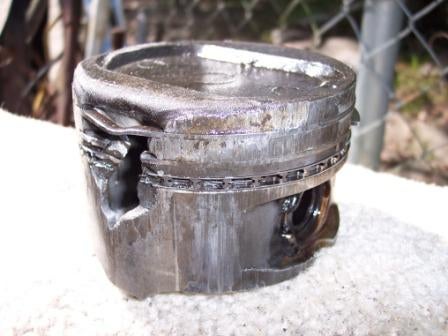
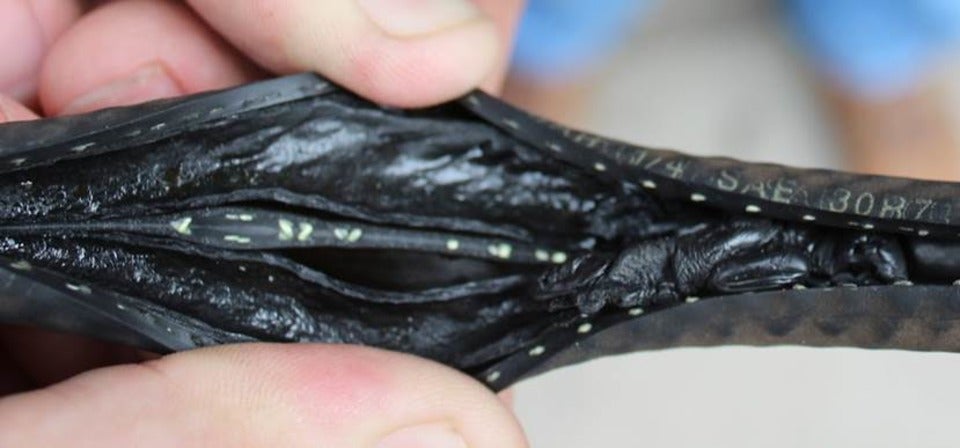
also it is real mean to rubber that is not designed to be used with it......
 getFuckedHerb
> MasterMario - Keeper of the V8s
getFuckedHerb
> MasterMario - Keeper of the V8s
07/11/2018 at 16:46 |
|
That’s brutal. On a side note, we just suck it up and pay $4-5/gallon for gas on the lake (boat lives on a lift, so no desire to take it out for gas up) whcih is always 93 non-ethanol thankfully.